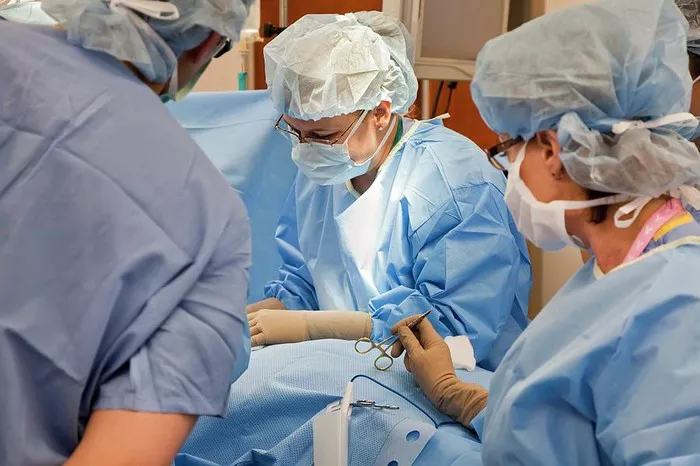Reconstructive breast surgery, a crucial aspect of medical cosmetology, helps individuals who have undergone mastectomy or have congenital breast deformities. The coverage of such procedures under Medicaid is a significant concern for many patients. This article aims to provide a comprehensive overview of Medicaid’s coverage for reconstructive breast surgery, detailing the eligibility criteria, procedures covered, and the nuances of Medicaid benefits in this context.
Understanding Medicaid and Reconstructive Breast Surgery
What is Medicaid?
Medicaid is a federal and state program that provides healthcare coverage to low-income individuals and families. It is administered by individual states, which means coverage details can vary significantly. Medicaid covers a wide range of medical services, including hospital and physician services, laboratory and X-ray services, and various other healthcare needs.
What is Reconstructive Breast Surgery?
Reconstructive breast surgery is designed to restore the appearance and function of the breast after mastectomy (surgical removal of the breast) or to correct congenital deformities. The surgery can include:
Implant-based reconstruction: Involves placing silicone or saline implants to create a breast shape.
Flap reconstruction: Uses tissue from other parts of the body to reconstruct the breast.
Nipple and areola reconstruction: Recreates the nipple and areola after the initial reconstruction.
See Also: What Is the Most Natural Breast Surgery?
Medicaid Coverage for Reconstructive Breast Surgery
Eligibility for Coverage
Medicaid’s coverage of reconstructive breast surgery is influenced by several factors:
Medical Necessity: Medicaid typically covers reconstructive breast surgery if it is deemed medically necessary. This usually means the surgery is required due to a mastectomy for breast cancer or congenital abnormalities.
State-Specific Guidelines: Each state administers its Medicaid program, leading to variations in coverage. Some states may have more comprehensive benefits compared to others.
Documentation and Pre-Approval: Often, detailed documentation and pre-approval from a medical provider are required to ensure that the surgery meets Medicaid’s criteria for coverage.
What Procedures Are Covered?
The coverage of specific procedures under Medicaid can vary, but generally includes:
Post-Mastectomy Reconstruction: Medicaid covers reconstructive surgery following a mastectomy, aligning with the Women’s Health and Cancer Rights Act (WHCRA), which mandates that insurance plans cover post-mastectomy reconstruction.
Nipple and Areola Reconstruction: This is often covered if performed as part of a broader reconstructive surgery plan.
Corrective Procedures: For congenital deformities or after a mastectomy, corrective surgeries may also be covered if deemed medically necessary.
Limitations and Exclusions
While Medicaid covers many aspects of reconstructive breast surgery, there are limitations:
Non-Medically Necessary Procedures: Cosmetic enhancements that are not deemed medically necessary may not be covered.
Pre-Authorization: Some procedures might require pre-authorization, and failure to obtain it could result in non-coverage.
State Variations: Coverage specifics, including the extent of procedures and associated costs, can vary by state. It is crucial to check the local Medicaid program’s guidelines.
Navigating Medicaid Coverage
Steps to Obtain Coverage
Consultation with a Medical Provider: Start by consulting with a board-certified plastic surgeon or reconstructive surgeon. They can provide a treatment plan and documentation of medical necessity.
Review Medicaid Guidelines: Understand your state’s Medicaid guidelines regarding reconstructive breast surgery. This information is available through your state’s Medicaid office or website.
Submit Documentation: Ensure that all required documentation, including medical records and pre-authorization forms, is submitted to Medicaid for approval.
Follow Up: Regularly follow up with Medicaid to check the status of your coverage and address any issues or additional requirements.
Appeals Process
If Medicaid denies coverage for reconstructive breast surgery, there is an appeals process:
Review the Denial: Understand the reasons for the denial. Medicaid should provide a detailed explanation.
Submit an Appeal: File an appeal with Medicaid, including any additional documentation or evidence supporting the medical necessity of the surgery.
Seek Assistance: Consult with your healthcare provider or a Medicaid specialist to help navigate the appeals process.
Additional Resources
Patient Advocacy Groups: Organizations such as the American Cancer Society or Breast Cancer Action can provide support and information regarding coverage and patient rights.
State Medicaid Offices: Contact your state’s Medicaid office for specific information about coverage and procedures.
Conclusion
Medicaid provides essential coverage for reconstructive breast surgery, significantly impacting the quality of life for individuals recovering from mastectomy or dealing with congenital breast issues. Understanding Medicaid’s coverage involves knowing the eligibility criteria, types of procedures covered, and navigating the application and appeals process. Given the variability in state regulations, it is crucial to stay informed and proactive in managing your healthcare coverage.
For anyone seeking reconstructive breast surgery under Medicaid, it is recommended to work closely with healthcare providers and Medicaid representatives to ensure that all necessary steps are followed and that the coverage is maximized according to your state’s guidelines.
Related topics:

